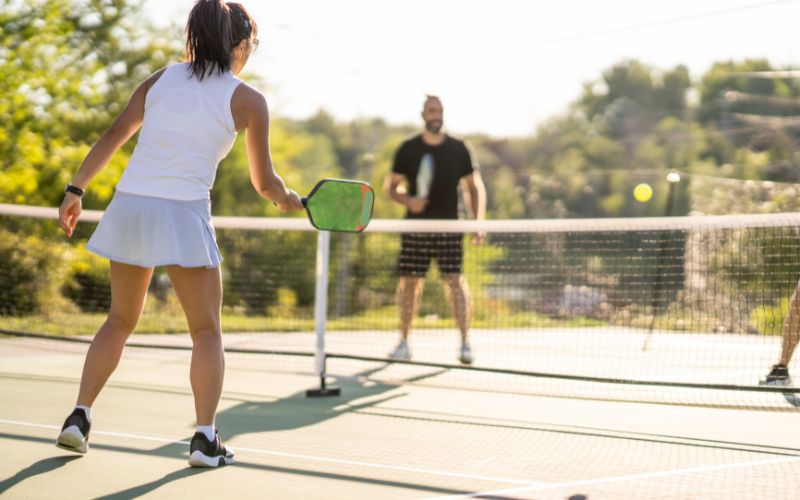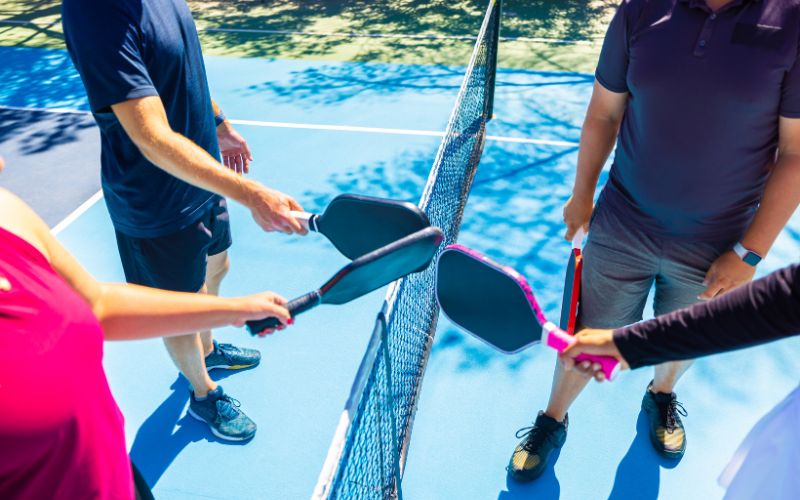Welcome to the world of pickleball rankings and tournament play, where numbers define your skills, rating, and competitive standing. Whether you’re a seasoned pickleball enthusiast or new to the sport, understanding how these rankings work can be a game-changer. In this comprehensive guide, we’ll unveil the complexities behind pickleball tournaments and rankings points, match play, skill assessment sheets, decode the terminology, and empower you to navigate this dynamic world with confidence.
The Essence of Pickleball Rankings
Pickleball rankings are the scorecard of your journey through the sport. They offer an insight into your skill level and your position within the competitive landscape. But what exactly do these rankings mean, and why should you care about them? Let’s start by unraveling the essence of pickleball rankings.
Pickleball rankings are not just numbers; they are a reflection of your dedication and growth in the sport. They provide a platform for players to gauge their opponent’s strengths, progress and help match organizers create fair and balanced games.
What Is a 4.0 Pickleball Player?
Pickleball players are often categorized by skill levels, with 4.0 being a common benchmark with power shots. But what does it mean to be a 4.0 pickleball player? It signifies a player who has mastered the fundamentals of the game like Tyson McGuffin and Dylan Frazier, showcasing good control and consistency in their shots. Understanding these skill levels helps both players and organizers create competitive matches.
What Is a 3.5 Pickleball Player?
A 3.5 pickleball player is typically considered intermediate with medium paced shots. They’ve developed their skills, but there’s room for improvement. Recognizing your own skill level can guide you to the right level of competition and training.
How Do You Rank Yourself in Pickleball?
Self-ranking in pickleball involves more than wins and losses; it’s a holistic self-assessment. Analyze strengths, weaknesses, and growth areas. Accurate assessment involves considering your skills, consistency, strategic understanding, and court positioning. Seek feedback from peers, engage in competitive play, and actively participate in skill assessments to refine yourself-ranking. Balancing humility and confidence is key for accurate self-evaluation in the dynamic sport of pickleball.
Deciphering Ranking Criteria
To demystify pickleball rankings, it’s essential to understand the criteria and calculations used in the ranking system. It’s more than just wins and losses; the system considers various factors, including your rating in tournaments, the skill levels of your opponents, and the types of games you participate in.
The dynamic universal pickleball rating (DUPR) is the backbone of this ranking system, and it’s what makes it tick. We’ll break down the mechanics of how DUPR works and how your ratings points are calculated.
Types of Pickleball Rankings: Unveiling the Variations
In Pickleball, rankings vary across formats like singles, doubles, and mixed doubles. Each format has distinct ranking systems, vital for players navigating diverse game styles. Recognizing these differences is essential for players participating in various formats, allowing them to gauge their performance accurately and tailor strategies to specific gameplay dynamics. Whether excelling in solo play or thriving in team dynamics, comprehending these ranking nuances enhances players’ adaptability and strategic prowess across the spectrum of Pickleball competitions.
Player Profiles: The Roadmap to Improvement
Your player profile is a treasure trove of information that can guide you to become a better player. Knowing how to read and interpret your profile can help you identify areas for improvement and track your progress over time. We’ll take you through this valuable roadmap to becoming a stronger pickleball player.
How to Improve Your Pickleball Ranking: Mastering the Art of Ranking Enhancement
Elevating your pickleball rating demands dedication and strategy. Practical tips include consistent practice, targeted skill development, competitive play, and seeking coaching or mentorship. Analyze match performances, identify weaknesses, and focus on continuous improvement. Stay informed about rule changes and adapt strategies accordingly. Balancing physical fitness, mental agility, and strategic finesse is crucial. Whether a casual player or aspiring pro, this journey entails commitment and a multifaceted approach for sustained ranking enhancement in pickleball.
Navigating the Evolving Landscape: The Future of Pickleball Rankings
As the sport of pickleball continues to gain popularity, the ranking system evolves alongside it. The future of pickleball rankings promises changes and innovations, and we’ll explore what you can expect in the coming years. Embracing these changes with an open mind and adaptability is essential for staying competitive in the world of pickleball.
So, whether you’re a seasoned pro aiming for the top ranks or a beginner looking to improve your game, understanding the numbers behind pickleball rankings is your key to success. With dedication and a deeper understanding of the system, you can climb the ranks and etch your name among the elite in this thrilling sport. Your pickleball journey is unique, and the rankings are your guide to reaching new heights.
Conclusion
Whether you’re a novice to the sport or a seasoned player, our guide has provided you with a comprehensive understanding of how these rankings work and why they matter.
Pickleball rankings are not just numbers; they are a reflection of your skill, your dedication, and your commitment to the sport. As we’ve explored, these rankings are influenced by a multitude of factors, from your performance in tournaments to the strengths of your opponents. But armed with this knowledge, you have the tools not only to comprehend your ranking but also to improve it.
Understanding the types of rankings, from singles to doubles, and the significance of tiers empowers you to navigate the competitive landscape with confidence. It’s a journey that may have its challenges, but it’s one that brings out the best in every pickleball player.
As the sport of pickleball continues to gain popularity, the ranking system will evolve and adapt to the changing landscape. Your journey in the world of pickleball is dynamic and ever-evolving, just like the rankings themselves. Embrace the future with an open mind and a willingness to adapt.
So, whether you’re aiming for the highest tier in pickleball rankings or seeking steady improvement, remember that your ranking represents your growth, your achievements, and your love for the sport. Keep practicing, keep competing, and keep pushing your boundaries. With dedication and a deeper understanding of the system, you have the potential to climb the ranks and etch your name among the elite in this thrilling world of pickleball. Your journey has only just begun, and the possibilities are limitless.
FAQs: Demystifying Pickleball Rankings
1. What are pickleball rankings, and why do they matter?
Pickleball rankings are numerical representations of your skill level and competitive standing in the sport. They matter because they provide a clear picture of your progress and help ensure fair matches.
2. What does it mean to be a 4.0 pickleball player?
A 4.0 pickleball player has achieved a high level of skill, demonstrating good control and consistency in their shots. It’s a benchmark for experienced players.
3. How can I accurately rank myself in pickleball?
Self-assessment involves analyzing your strengths, weaknesses, and areas for growth, not just counting wins and losses. It’s the first step in understanding your skill level.
4. What is the DUPR, and how does it work?
DUPR is the backbone of the ranking system. It takes into account various factors, including your performance in tournaments, your opponents’ skill levels, and the type of games you play to calculate your ratings points.
5. Are there different ranking systems for different pickleball formats?
Yes, there are distinct ranking systems for singles, doubles, and mixed doubles in pickleball. Understanding these variations is crucial for players participating in different game formats.
6. How can I improve my pickleball ranking?
Improving your pickleball ranking requires dedication and strategy. We provide practical tips and strategies for players, whether they’re recreational or aspiring for the professional circuit.






